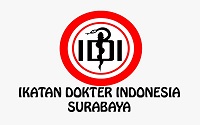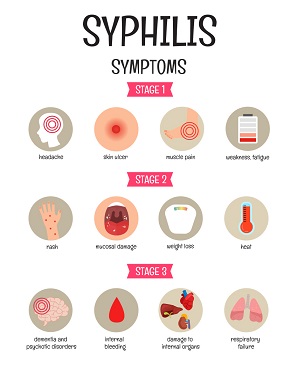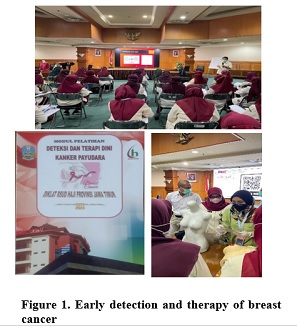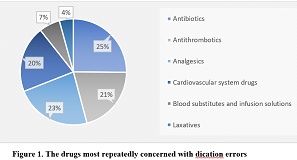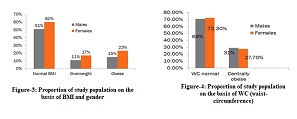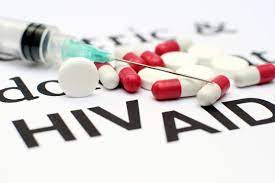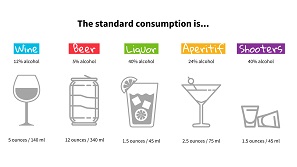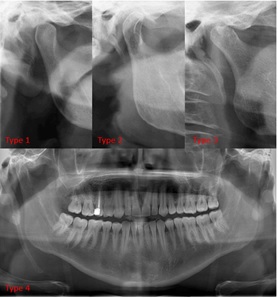Comorbid Factors and Duration of Illness in Dengue Hemorrhagic Fever Patients at Universitas Airlangga Hospital, Surabaya, Indonesia

Dengue hemorrhagic fever (DHF) continues to prevail in Indonesia annually. Individuals afflicted with dengue hemorrhagic fever may exhibit distinct clinical manifestations, and these can vary based on individual factors. Numerous elements can contribute to this diversity. Typically, adult patients with comorbidities face a less favorable prognosis for the primary disease. This study aimed to examine the impact of comorbid factors on the severity of DHF, as well as its duration. The comorbidities considered in this research encompassed hypertension, diabetes mellitus, and obesity. This research employed an analytical approach and was conducted at Universitas Airlangga Hospital from January to December 2022. Medical records served as the primary data source for this study. A total of 121 patient samples were collected based on specific criteria. The criteria included adults (>18 years) treated at Universitas Airlangga Hospital, who had no comorbid diseases other than those under study, and possessed complete medical record data. The sampling technique employed in this research was total sampling, which adhered to the inclusion and exclusion criteria. This research demonstrated that comorbid factors were not associated with the severity of DHF (p<0.05), while the duration of illness in DHF patients was correlated with the severity of the disease (p=0.027).
INTRODUCTION
Indonesia is a tropical country. With changing seasons, several infections pose a threat to the society. Infectious diseases are often caused by microorganisms such as parasites, bacteria, fungi, and viruses. This is associated with the conditions of temperature, rainfall, and air humidity in tropical countries, which are conducive to the growth and development of microorganisms responsible for tropical disease infections11. One significant contributor to tropical infectious diseases in Indonesia is viruses, and among them is the dengue virus. The virus is transmitted to humans through mosquitoes, specificallyAedes aegyptiandAedes albopictus, which are prevalent in various locations. This virus can lead to dengue hemorrhagic fever (DHF), an acute disease caused by a virus serotype from the genus Flavivirus, family Flaviviridae, with clinical manifestations characterized by bleeding that may result in shock and even death22. DHF can be a feared occurrence in the community due to its relatively fast and easy transmission. Within just one month in endemic areas, the number of dengue cases can reach up to tens of people33. The transmission of dengue fever is widespread in tropical regions, with risk variations depending on temperature, humidity, rainfall, and urbanization44.
According to data from the Indonesian Ministry of Health (2021), dengue cases were reported in 456 districts or cities across 34 provinces as of the 51st week of 2021, with a total of 51,048 patients. Deaths caused by dengue fever occurred in 167 districts or cities, reaching a total of 472 people. Based on information from the East Java Provincial Health Service, the number of dengue fever patients in East Java in January 2022 reached 1,220, with 21 fatalities55.
According to the health service's data3, the city of Surabaya experiences an annual increase. In 2020, the incidence rate per 100,000 population was 2.51, which increased to 3.80 in 2021. Temporary data for 2022 from January to March recorded a rate of 3.70. DHF exhibits clinical manifestations and degrees of severity that depend on individual factors and the virulence of the virus. Differences in clinical characteristics and disease severity may indicate the impact of serological status, immunological background, comorbid factors, and socioeconomic status66.
Comorbidities means the presence of more than one disease or condition occurring in an individual at the same time. Comorbidities are described as chronic or long-term conditions77. Comorbidities are congenital diseases suffered by humans in addition to the main disease. Common comorbid diseases in Indonesia include hypertension, diabetes, obesity, and heart disease88. According to the Indonesian Ministry of Health33, the estimated number of hypertension cases in Indonesia in 2021 was 63,309,620 people, with a death toll of 427,218 people. Diabetes in Indonesia reached 6.2%, equivalent to more than 10.8 million cases in the year 2020. Meanwhile, the prevalence of obesity in Indonesia doubled from 19.1% in 2017 to 35.4% in 2018.
Generally, comorbid diseases can worsen the prognosis and increase the severity of the main disease. For instance, research conducted by Senewe et al. in 2021 showed that the prognosis for DHF is determined by the severity of the disease, length of treatment, age, and nutritional condition of the patient. Generally, the prognosis for grades one and two is good, while degrees three and four depend on the length of disease detection. In cases of dengue fever accompanied by complications, the prognosis is poor99. In patients with chronic diseases, their immune systems will be weakened, making them more susceptible to infections and other diseases1010. This indicates that patients with comorbidities are more prone to infections from other diseases1111.
Patients who have contracted DHF will experience varying durations of illness based on factors such as the patient's characteristics, the clinical manifestations observed, and laboratory test results. The length of fever before hospital admission is a contributing factor to the duration of hospital stay for dengue fever patients. Additionally, this duration can be influenced by indicators of plasma leakage and leukocyte count1212.
Previous research results have shown that DHF manifests in several degrees of severity, and various comorbid diseases can exacerbate the prognosis of the primary ailment. However, research comparing DHF patients with and without comorbidities is still very limited. Therefore, further investigation on this matter is necessary. This study aimed to analyze the characteristics of DHF patients with comorbid diseases and to assess the impact of the duration of illness on the severity of dengue fever at Universitas Airlangga Hospital from January to December 2022.
MATERIALS AND METHODS
This research had obtained ethical approval from the Universitas Airlangga Hospital research ethics committee with reference number 105/KEP/2022. It was conducted as an analytic study, utilizing samples derived from the medical records of Universitas Airlangga Hospital spanning from January to December 2022. During the data collection process at Universitas Airlangga Hospital, a total of 284 medical records of patients with DHF were initially identified. However, due to some samples not meeting the inclusion and exclusion criteria, a total of 121 patients were included in this study.
After collection, the data were sorted based on specified variables, including the presence of comorbid diseases, the duration of the patient's illness, and the severity status of the patient. Data processing was performed using IBM SPSS to examine the relationship between
Binsasi E, Bano EN, Salsinha CN. Analisis Model Penyebaran Penyakit Demam Berdarah Dengue Di Kota Kefamenanu. Statmat J Stat Dan Mat. 2021;3(1):1.
Sukohar. Demam Berdarah Dengue (DBD). Medula. 2014;2(2):1-15. doi:10.35952/jik.v1i2.80
Kemenkes. Data DBD Indonesia.; 2021.
Xu C, Pang J, Hsu JP, Leo YS, Lye DCB. Differences in clinical features and dengue severity between local and migrant Chinese with dengue infection in Singapore. PLoS One. 2018;13(8):1-10.
Philipus Senewe F, Endah Pracoyo N, Marina R, Letelay AM, Sulistiyowati N, Upaya Kesehatan Masyarakat P. Pengaruh Penyakit Penyerta/Komorbid Dan Karakteristik Individu Dengan Kejadian Covid-19 Di Kota Bogor Tahun 2020. J Ekol Kesehat. 2021;20(2):69-79.
Yusoff NSBM. Demam Berdarah Dengue. Vol 2.; 2010.
Ndera ML, Supriyatni N, Rahayu A. Faktor Komorbid terhadap Covid-19 di Puskesmas Kota Tahun 2020. J Biosainstek. 2021;3(2):1-9.
Tule NRS. Systematic Review: Identifikasi Faktor Jenis Kelamin Dan Kelompok Usia Pada Pasien Demam Berdarah Dengue Dengan Pendekatan Kasus Trombositopenia. 2020.
Rachim, W., Subronto, Y.W., Laksanawati, I.S. Faktor-Faktor yang Berpengaruh terhadap Lama Rawat Inap Pasien Demam Berdarah Dengue. 2019
Suhendro, Nainggolan L, Chen K, Pohan HT. Demam berdarah dengue. Buku ajar ilmu penyakit dalam jilid III. Edisi ke-5. Jakarta: Pusat Penerbitan Departemen Ilmu Penyakit Dalam Fakultas Kedokteran Universitas Indonesia. 2015. pp. 53958.
Yeung W, Lye DCB, Thein TL, Chen Y, Leo YS. Blood pressure trend in hospitalized adult dengue patients. PLoS One. 2020;15(7):1-11. doi:10.1371/journal.pone.0235166
Lestari, Zulkarnain, Sijid SA. Diabetes Melitus: Review Etiologi, Patofisiologi, Gejala, Penyebab, Cara Pemeriksaan, Cara Pengobatan dan Cara Pencegahan. UIN Alauddin Makassar. 2021;(November):237-241. http://journal.uin-alauddin.ac.id/index.php/psb
Chen CY, Lee MY, Lin K Der, et al. Diabetes mellitus increases severity of thrombocytopenia in dengue-infected patients. Int J Mol Sci. 2015;16(2):3820-3830.
Kharisma PL, Muhyi A, Rachmi E. Hubungan Status Gizi, Jenis Kelamin dengan Derajat Infeksi Dengue pada Anak di RSUD Abdul Wahab Sjahranie Samarinda. J Sains dan Kesehat. 2022;3(3):376-382.
Buntubatu S, Arguni E, Indrawanti R, Laksono IS, Prawirohartono EP. Status Nutrisi sebagai Faktor Risiko Sindrom Syok Dengue. Sari Pediatr. 2017;18(3):226.
Utomo WC. Hubungan Status Gizi Terhadap Derajat Keparahan Demam Berdarah Dengue Pada Anak Usia 0-14 Tahun Periode Januari Desember 2016 Di Rs Pku Muhammadiyah Yogyakarta. 2018.
Prihatiningrum RM. Perbedaan Angka Kejadian Antara Anak Status Gizi Baik Dan Status Gizi Kurang Dengan Kejadian Demam Berdarah Dengue Di Rsud Kota Surakarta. 2016.
Salsabila O, Shodikin MA, Rachmawati DA. Analisis Faktor Risiko Terjadinya Sindrom Syok Dengue Pada Anak di RSD dr. Soebandi Kabupaten Jember. J Agromedicine Med Sci. 2017;3(1):56.
Trang NTH, Long NP, Hue TTM, et al. Association between nutritional status and dengue infection: A systematic review and meta-analysis. BMC Infect Dis. 2016;16(1):1-11.
Zulkipli MS, Dahlui M, Jamil N, et al. The association between obesity and dengue severity among pediatric patients: A systematic review and meta-analysis. PLoS Negl Trop Dis. 2018;12(2):1-22.
Buntubatu S, Arguni E, Indrawanti R, et al. Status Nutrisi sebagai Faktor Risiko Sindrom Syok Dengu. Sari Pediatr 2017; 18: 226.
Utomo W. Hubungan Srarus Gizi terhadap Derajat Keparahan Demam Berdarah Dengue pada Anak 0-14 Tahun Pediode Januari Desember 2016 di Rs Pku Muhammadiyah Yogyakarta. 2018.
Prihatiningrum Rm, Wildan M. Perbedaan Angka Kejadian Antara Anak Status Gizi Baik dan Gizi Kurang dengan Kejadian Demam Berdarah Dengue di RSUD Kota Surakarta. 2016.
Salsabila O, Shodikin M, Rachmawati D. Analisi Faktor Risiko Terjadinya Sindrom SYok Dengue Pada Anak di RSD dr. Soebandi Kabupaten JEmber. J Agromedicine Med Sci 2017; 3: 56.
Trang NTH, Long NP, Hue TTM, et al. Association between nutritional status and dengue infection: A systematic review and meta-analysis. BMC Infect Dis. 2016; 16:1-11.
Zulkipli MS. Dahlui M, Jamil, et al. The association between obesity and dengue severity among pediatric patients: A systematic review and meta-analysis, PLoS Negl Trop Dis 2018; 12: 1-22.
Copyright (c) 2024 Lady Savita

This work is licensed under a Creative Commons Attribution-ShareAlike 4.0 International License.
- The journal allows the author to hold the copyright of the article without restrictions.
- The journal allows the author(s) to retain publishing rights without restrictions.
- The legal formal aspect of journal publication accessibility refers to Creative Commons Attribution Share-Alike (CC BY-SA).
- The Creative Commons Attribution Share-Alike (CC BY-SA) license allows re-distribution and re-use of a licensed work on the conditions that the creator is appropriately credited and that any derivative work is made available under "the same, similar or a compatible license”. Other than the conditions mentioned above, the editorial board is not responsible for copyright violation.






